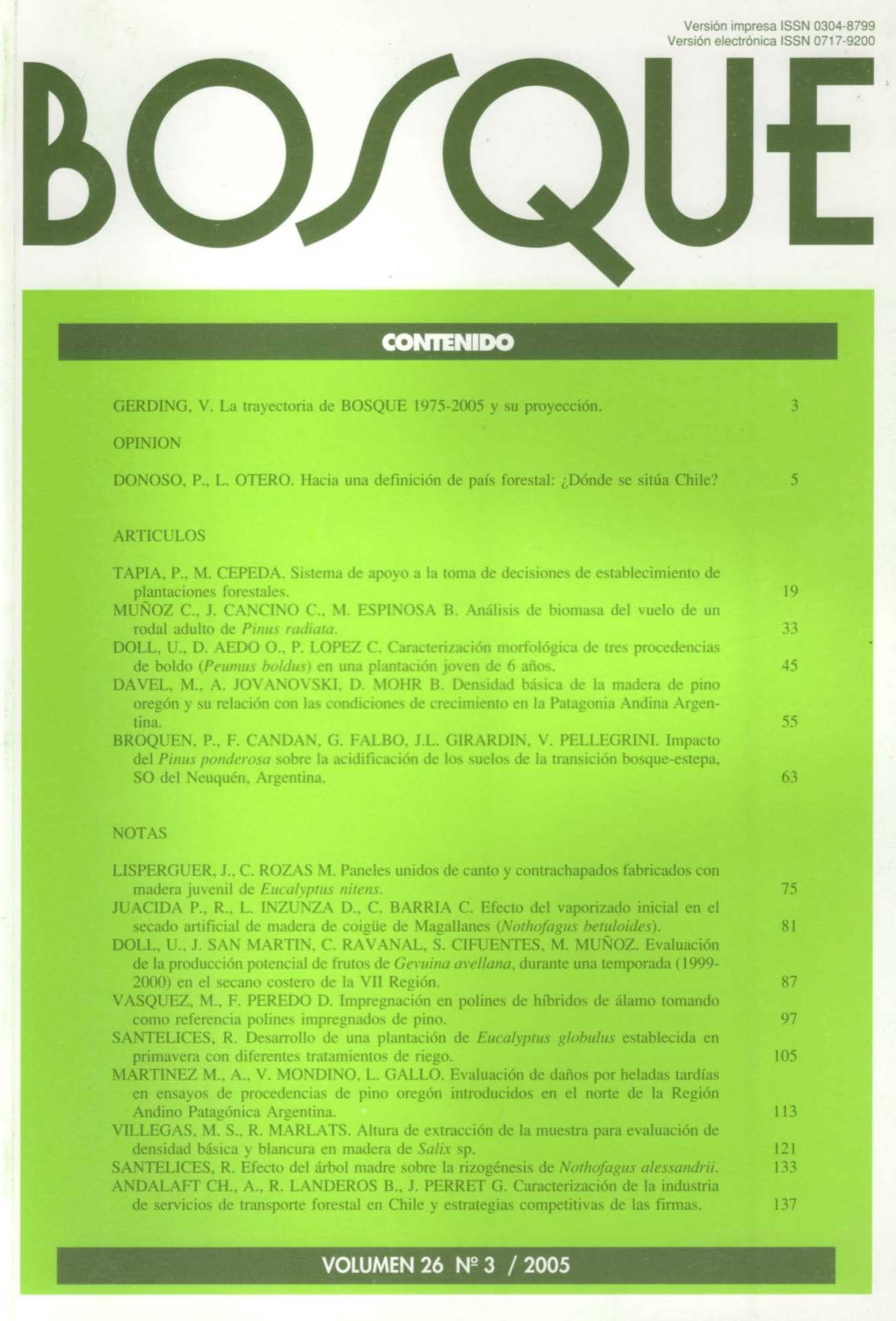Impact of Pinus ponderosa on acidification at forest-steppe transition soils, SW Neuquén, Argentina
Main Article Content
Abstract
Soil reaction and some related properties were studied in twenty-four plots approximately distributed through a west-east transverse, twelve under shrub-gramineous steppe, and twelve under Pinus ponderosa Dougl. –first plantation from 14 to 19 years– with equivalent site conditions and whose soil parent material was holocenic volcanic ash under xeric hydric regime. Composite soil samples were analyzed for each centimeter within the five first ones. Soil solution acidity and exchangeable acidity increased under pines in relation with shrub-gramineous steppe vegetation. Acidification was due to the lower buffering capacity of soils under xeric regime and did not meant a change in soil acidity class, being slightly acid under both vegetation types. It can be stated that the rate of acidification within the first five soil centimeters, would not have grate consequences on germination and growth for the autochthonous species and as for futures afforestations because the acidity class, total exchangeable bases, phosphate retention did not change under pines. Soil acidification and exchangeable acidity increment, should be considered as indicators of changes that begun to happen after the afforestations and must be used on future monitoring

